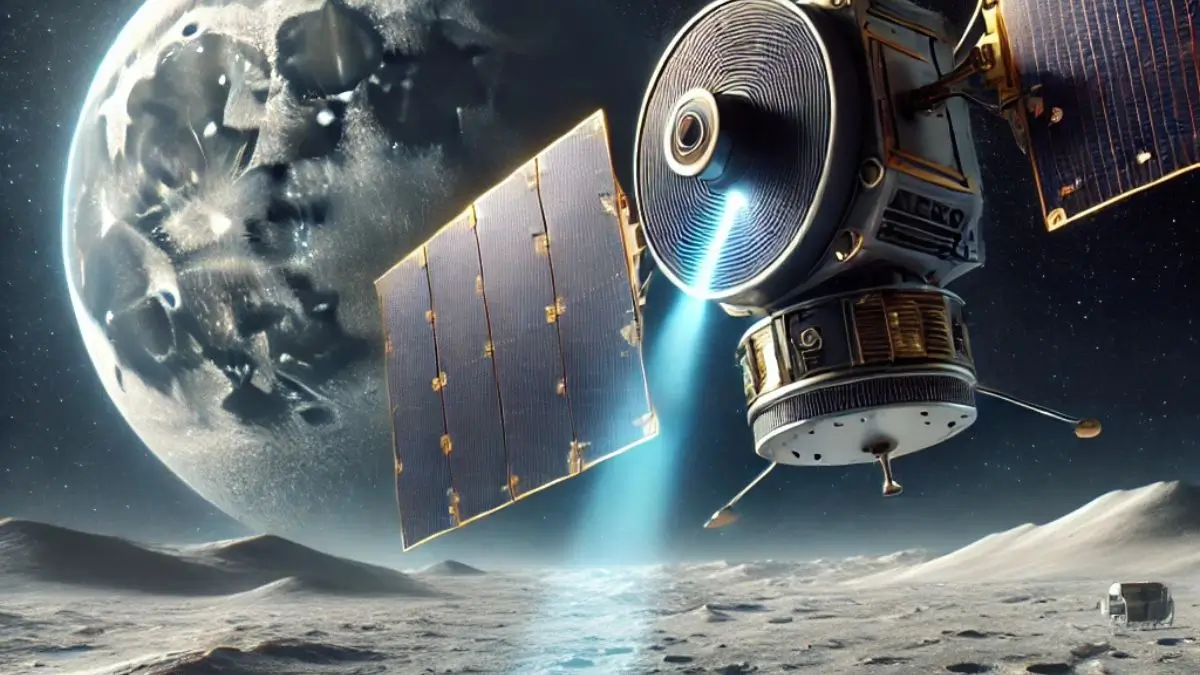NASA’s Lunar Trailblazer, a small satellite designed to map lunar water, has embarked on its mission to explore one of the Moon’s most valuable resources. Launched on 26th February aboard a SpaceX Falcon 9 rocket, the orbiter will investigate the presence, form, and distribution of water in the cold, shadowed regions of the Moon. By providing high-resolution maps of lunar water, the mission aims to support future human and robotic exploration, offering crucial insights for sustainable space travel and lunar resource utilization.
Key Highlights
1. Mission Objectives
- Map the distribution and form of water on the Moon.
- Determine how lunar water changes with time and temperature.
- Improve understanding of water cycles on airless celestial bodies.
2. Advanced Science Instruments
Lunar Trailblazer will use two key instruments,
- HVM3 (High-resolution Volatiles and Minerals Moon Mapper)
- Detects and maps spectral fingerprints of minerals and water.
- Built by NASA’s Jet Propulsion Laboratory (JPL).
- LTM (Lunar Thermal Mapper)
- Maps thermal properties and minerals.
- Developed by the University of Oxford, funded by the UK Space Agency.
3. Journey to the Moon
- Weighs 440 pounds (200 kg) and measures 11.5 feet (3.5 meters) wide.
- Uses a low-energy transfer trajectory, relying on Sun, Earth, and Moon gravity.
- Travel time: 4 to 7 months after launch.
4. Exploration of the Moon’s South Pole
- Will peer into permanently shadowed craters at the Moon’s South Pole.
- Uses faint reflected light to detect possible frozen water deposits.
- Identifying ice deposits could aid future lunar exploration and resource utilization.
5. High-Risk, Low-Cost Mission
- Selected under NASA’s SIMPLEx (Small Innovative Missions for Planetary Exploration) program.
- Designed to be a low-cost, high-risk mission with lighter oversight requirements.
- Enables valuable science research that would otherwise be financially unfeasible.
6. Future Benefits and Applications
- Helps identify water for potential astronaut use (drinking water, oxygen, and fuel).
- Contributes data for future lunar habitation and robotic missions.
- Improves understanding of how water behaves in space environments.
| Summary/Static | Details |
| Why in the news? | NASA’s Lunar Trailblazer: Mapping the Moon’s Water |
| Launch Vehicle | SpaceX Falcon 9 |
| Mission Type | Small satellite for lunar water mapping |
| Key Instruments | HVM3 (NASA JPL), LTM (University of Oxford) |
| Orbit Destination | Moon’s South Pole |
| Weight | 440 pounds (200 kg) |
| Size | 11.5 feet (3.5 meters) wide |
| Expected Travel Time | 4 to 7 months |
| Main Objectives | Identify, map, and analyze lunar water |
| Mission Category | NASA’s SIMPLEx Program (low-cost, high-risk) |
| Potential Benefits | Supports future lunar exploration, astronaut missions, and scientific studies |



 India Plans New Antarctic Station Maitri...
India Plans New Antarctic Station Maitri...
 India Launches Its First 1.0 GHz, 64-bit...
India Launches Its First 1.0 GHz, 64-bit...
 ISRO Projects Seven Launches Including U...
ISRO Projects Seven Launches Including U...







